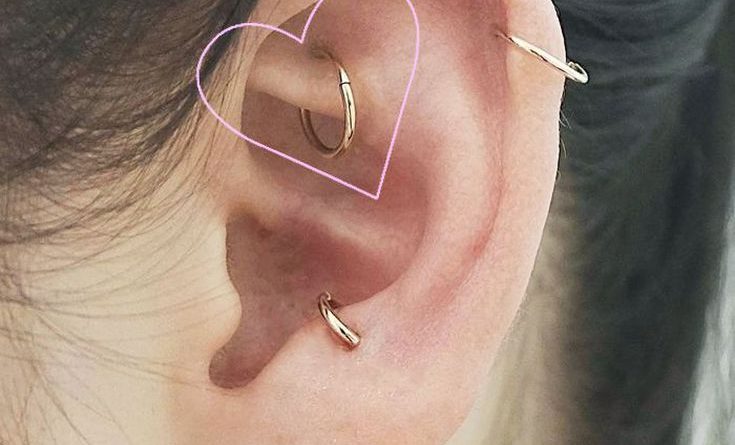Rook Piercing Jewelry For That Awesome Feeling
The rook piercing is an uncommon inner-ear piercing. Although the tragus and the daith are more popular, who wants to look like everyone else? Additionally, the rook is a versatile, and it’s currently very popular. After our customers have a few lobe piercings, they then want to try something new, and the rook has become one of their favorites, says Nadine McCarthy Kahane, founder and CEO of Stone and Strand, a fine jewelry and piercing shop in NYC. No piercing is pain-free, but we wanted to find out how painful the rook piercing is, how long it takes to heal, what types and materials are best, and whether it is dangerous. So we talked to a piercer as well as dermatologists about all the things you need to know about this cool and niche piercing. Keep reading Rook piercing jewelry
What is a rook piercing
In the inner ear, a rook piercing is a piercing of the cartilage above the tragus. Through the cartilage of your rook, the piercer inserts a hollow needle and then inserts the jewelry. When performed by a professional using sterile techniques, rook piercings are safe. The Circle London’s piercer, Rhianna Jones, says the piercing is suitable for most people. However, due to differences in ear anatomy, a small number of people may not be able to get the piercing. “I will always work with each client to ensure the jewelry complements both their anatomy and existing piercings,” she says.
Rook Piercing Cost
Depending on where you live and where it’s done, the price usually ranges between $30 and $80 plus jewelry. The cost of the cartilage piercings is the same regardless of the jewelry you select,” says Jones. For example, at Studs, New York’s Kaia Gerber-approved piercing studio, the fee is $35 plus the cost of the jewelry you choose. However, at Stone and Strand, the service is complimentary with the purchase of jewelry.
Healing Time and Pain
Our first (and most common) concern when thinking about piercings is whether they will hurt. Nevertheless, medical and cosmetic dermatologist Gary Goldenberg, MD, of Goldenberg Dermatology warns: “This type of piercing goes through a very thick layer of cartilage, which is normally more painful and takes longer to heal.” For example, lobe piercings that do not involve cartilage take about six weeks to heal, while cartilage piercings like the rook or snug take six months or longer to heal. Goldenberg says there is a much higher risk of infection with this procedure than a lobe piercing. of cartilage is also a lot more serious than the earlobe and treatment is more involved.”
Following-up
As with any piercing, it depends on how well you follow your aftercare instructions and your general health. As recommended by your piercer, follow the aftercare instructions until the piercing is fully healed. It is always advisable to avoid sleeping on any new ear piercing until it has fully healed as this can cause problems and delay the healing process. Dermatologist Kristina Goldenberg, MD, says that one of the most common cleaning mistakes is using hydrogen peroxide and alcohol on the area. A gentle wash with soap and water two to three times per day will suffice. I recommend adding a topical antibiotic right away if there are any signs of infection
Changing out a rook piercing
Do you remember our tip to leave it alone? The piercing must be removed once it has fully healed. You can have your cartilage piercing checked by most piercing studios (some do it for free) if you are unsure whether it is healed and ready for jewelry. It’s something to ask about when getting your rook pierced. For example, Stone and Strand tells customers to return to the studio to replace their jewelry. “After getting new piercings, it is a good idea to follow up with your piercer to see how healing is going, and perhaps swap out jewelry for something better suited to the piercing.

